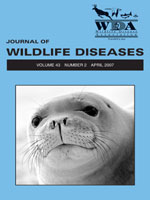PARASITOLOGY (3)
PATHOLOGY (2)
GENETICS (1)
EPIDEMIOLOGY (3)
SHORT COMMUNICATIONS (11)
BOOK REVIEWS (3)
BOOKS RECEIVED (1)

No abstract available
No abstract available
No abstract available
No abstract available
